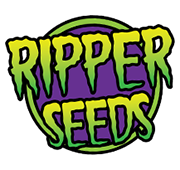What is latent hop virus?
The latent hop virus is, as its name suggests, a virus that infects plants and was discovered in hop strains. As long as the latent virus affects hops, it is not a very problematic disease, but it seems that in the case of cannabis and in certain varieties, its effects can be devastating or at least a great headache for those who suffer from it in its cultivation. Family: Pospiviroidae Genus: Cocadviroid Description: Circular, single-stranded and naked RNA of 256 nucleotides. The term "latent" in the name refers, on the one hand, to the fact that the majority of natural infections occur without inducing apparent foliar symptoms.
What damage does HpLVd cause?
Already in 2017 some California growers noticed a series of changes in some of their varieties, such as slow growth, malformations or chlorosis in the leaves, fragile stems and a notable reduction in the production of flowers and resin. Furthermore, clones cut from plants with symptoms had a much poorer rooting index than plants without symptoms. At first it was called PCIA (Putative cannabis infectious agent) until later the symptomatic varieties were carefully studied. Several studies showed that around 35% of the Californian cannabis varieties had symptoms of HpLVd. Samples of plants with symptoms and plants without symptoms were taken and a genetic analysis of the samples was carried out, clearly isolating a group of nucleotides that did not belong to cannabis without symptoms. They compared the nucleotide chain to the file of known viruses. The matches suggested that the HPLV virus clearly affected cannabis.
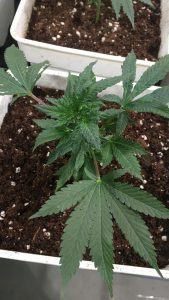 |
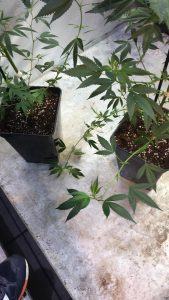 |
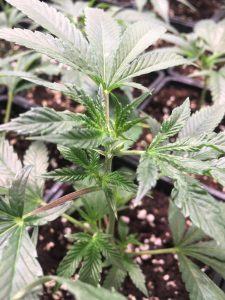 |
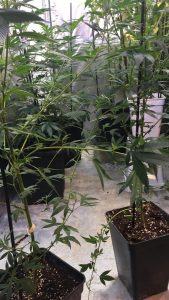 |
How is latent hop virus spread?
The transmission of this virus is mainly through insect bites. In the case of Hops, the most frequent is Phorodon humuli , but in the case of cannabis, any aphid can be the transmitter of this virus. As we have seen before, pests are not the only transmission vector. Garden tools, cutting blades, and other utensils can transmit the virus from one plant to another.
How can you combat HpLVd?
Some Californian company has a tissue culture cleaning process for viruses. Although the system is still patent pending and has not come to light, it is hoped that in vitro reproduction is on the way forward. There are already several trials in Portugal of this technique to clean hop strains. To date, around thirty varieties of cannabis have been de-viralized. Even so, and while we wait for a procedure within the reach of all of us, the only option that remains is prevention and reduction of the viral load in our crops.
Prevention techniques:
-Subject to quarantine all the new acquisitions of our mother's wardrobe, especially if we do not know their origin. -Sterilize garden tools. -Use gloves to handle the plants. -Change gloves between varieties. -Eliminate infected varieties and all the remains of these. -Keep the crop free of pests to avoid contagion from other individuals.
How to disinfect our rooms?
-H2O2
After a little research and based on our own experience and after many tests with various products, we have come to the conclusion that H2O2 solutions help very positively to disinfect plants, thus, to control infection . Hydrogen Peroxide has a great oxidative power and is a great ally in the eradication of microorganisms and pathogens that threaten our rooms. H2O2 is capable of reacting with organic matter and decomposing into water and oxygen. Usually 1% to 2% solutions are used. More clearly, between 10 ml and 20 ml per liter of distilled water. Hydrogen peroxide will also help our plants at the root level since it will increase the oxygen load in the roots, but we must be very careful with solutions for irrigation, since we can also destroy all the micro life of the soil. Thus, we can use H2O2 for disinfection of work tools. In these cases, solutions of between 30% and 50% will be used. More clearly 300 ml of H2O2 for every 700 ml of distilled water. The tools will be soaked for a minimum of 10 minutes. This will help keep our tools free of pathogens or viruses.
-Colloidal Silver
No bacteria, virus, fungus, yeast or microbe can live in a liquid in which there is a single silver particle, since this metal kills all the aforementioned problems by contact in just a few minutes. Colloidal silver has been considered a super antibiotic since the mid-19th century. With a dosage of 0.04% it will be enough for it to take effect.
-To remember:
Solution for spraying: 1 li Distilled water, 10 ml hydrogen peroxide, 0.04g of colloidal silver. Tool cleaning solution: 600 ml distilled water, 400 ml hydrogen peroxide, 0.04g of colloidal silver. How can I try to recover an affected variety? It is difficult to know if the plant's own immune system can kill the virus. In any case, our experience shows us that a good diet and vigorous growth together with a reduction in the viral load in the grow room can leave the virus behind and be able to harvest a plant with little damage. We must always maintain the conditions so that the development of the plant is fast and strong while reducing the viral load in our room and trying to help the natural defenses of the plant. At first glance it seems to us that if we manage to have a healthy and strong plant that leaves the virus behind, the successive cuttings of this specimen increasingly leave the symptoms of the virus behind. Therefore, we recommend carrying out this cleaning-growth-cutting process several times in succession to try to reduce the viral load in the variety as much as possible and thus help the plant's own immune system to kill off the virus. It is not an easy task, but with hygiene and perseverance we can achieve it. Ripper Crew article published in Soft Secrets
